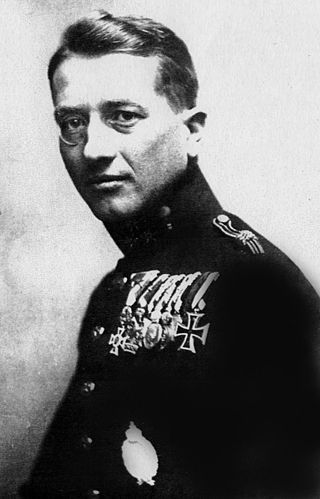
Godwin Karol Marian von Brumowsky was the most successful fighter ace of the Austro-Hungarian Air Force during World War I. He was officially credited with 35 air victories, with 8 others unconfirmed because they fell behind Allied lines. Just before the war ended, von Brumowski rose to command of all his country's fighter aviation fighting Italy on the Isonzo front.

Oberleutnant Frank Linke-Crawford, was the fourth-ranking ace of the Austro-Hungarian Air Force during World War I, with 27 victories.

Friedrich Hefty, also referred to as Frigyes Hefty, was a World War I Austro-Hungarian flying ace credited with five confirmed and five unconfirmed aerial victories. His early interest in aviation led him to drop out of school in 1913 and become a glider pilot. When World War I began, he served first as an aerial observer, then as a pilot. He scored his first aerial victory as an observer, on 7 October 1915. Once he became a pilot, he claimed nine other victories, four of which were verified. On 22 August 1918, he became one of the first combat pilots to bail out using a parachute. Hefty ended the war with ten awards of the Medal for Bravery.

Augustin Novák, sometimes referred to as Novak or Nowak was an Austro-Hungarian World War I flying ace credited with five or seven aerial victories. A prewar soldier, who had joined the horse artillery in 1911, he participated in the early Battle of Krasnik against the Russians, winning a Silver Medal for Bravery. After transferring to aviation service in January 1916, he became a two-seater pilot on the Russian, Romanian, and Italian Fronts. His aerial victories earned him two more awards of the Medal for Bravery, both First Class. He was then removed from combat to become an instructor in January 1918.
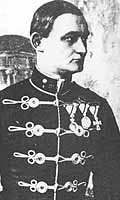
OberleutnantRudolf Szepessy-Sokoll Freiherr von Negyes et Reno was a Hungarian World War I flying ace credited with five aerial victories. He began his military career as a cavalryman as the war began in 1914. After winning the Silver Medal for Bravery and being promoted into the officers' ranks, he transferred to the Austro-Hungarian Aviation Troops in mid-1915 as an aerial observer. On 14 February 1916, while participating in a historic strategic bombing raid on Milan, he scored his first aerial victory. After shooting down another airplane and an observation balloon, Szepessy-Sokoll was transferred to a fighter unit after pilot training. After shooting down a pair of Macchi L.3s on 5 November 1917, he was killed in action the next day.
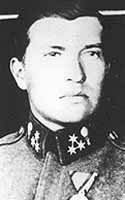
FeldwebelKarl Teichmann (1897–1927) was a Austro-Hungarian World War I flying ace credited with five aerial victories. His path to aerial victories began in 1915, when he joined the Austro-Hungarian infantry. His prewar training as an auto mechanic saw him assigned as an aviation mechanic on the Russian Front in February 1916. After eight months, he began pilot training, being awarded Austrian Pilot's Certificate 658 on 16 May 1917. Reassigned to the Italian Front, he scored five victories—three shared—between 26 September 1917 and 22 August 1918. Teichmann would survive the war and die of natural causes in Graz, Austria.

FeldwebelAndreas Dombrowski was an Austro-Hungarian World War I flying ace credited with six aerial victories scored on three different fronts. He was conscripted into the Austro-Hungarian military in 1915. Dombrowski underwent pilot's training, gaining his license in June 1916. Posted to the Russian Front during the Brusilov Offensive to fly reconnaissance, he was credited with his first victory on 17 August 1916. In September, 1916 he was transferred to the Romanian Front. Still flying a reconnaissance aircraft, he fought four more successful engagements during 1917, becoming an ace. Transferred to the Italian Front in April 1918, he flew an Albatros D.III for his former observer, Karl Patzelt. On 4 May 1918, Dombrowski scored his sixth and final victory, then took a bullet to the face and crashlanded. Once healed, he went to a photographic reconnaissance unit for the rest of the war.
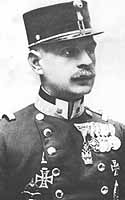
Hauptmann Karl Nikitsch was a professional soldier who served, in succession, the Austro-Hungarian Empire and the First Austrian Republic. His First World War service in the Austro-Hungarian Imperial and Royal Aviation Troops was marked by his abilities in organizing, staffing, and commanding flying squadrons. He also became a flying ace credited with six aerial victories Postwar, he commanded the Austrian Flugpolizei.
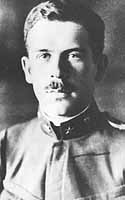
Oberleutnant Josef Pürer (1894-1918) was an Austro-Hungarian World War I flying ace credited with six aerial victories. A volunteer for the artillery when the war began, he fought for two years on the Russian Front. He was commissioned as an officer on 1 January 1916; later that year he transferred to the Austro-Hungarian Aviation Troops. He served as an aerial observer in northern Italy until early 1918. After scoring six aerial victories, he was trained as a fighter pilot by 11 July 1918. He was killed in action by Sidney Cottle on 31 August 1918.

OberleutnantRudolf Weber (1890-1918) was an Austro-Hungarian World War I flying ace credited with six aerial victories. Weber was an experienced infantry officer when World War I began in 1914, and he went into action on the Russian Front. He transferred to aerial service in late 1915. During his 1916 service as an observer, he scored his first victory and suffered a disfiguring wound to his face. Once healed, he trained as a pilot and returned to action, but on the Italian Front. Between 11 August and 26 October 1917, he scored five more victories. In January 1918, he was posted to command Flik 102G, a night bombing squadron. In October 1918, as the Austro-Hungarian Empire dissolved in defeat, Weber led an exodus home from his unit. Along the way, a trigger-happy militiaman shot Weber to death.

OberleutnantOtto Jäger was an Austro-Hungarian World War I flying ace credited with seven aerial victories. He entered the war in 1914 as an infantry officer. By mid-1915, he had suffered three serious wounds fighting on the Russian Front, winning the Military Merit Medal, Silver Medal for Bravery, and the German War Service Medal. Invalided from front line service to training duties, Jäger trained as an aerial observer. Posted back to the Russian Front to fly with Fliegerkompanie 10 in early 1916, Jäger scored his fifth victory on 2 August 1916. He was awarded the Silver Military Merit Medal, the Military Merit Cross, and the German Iron Cross Second Class.

StabsfeldwebelJohann Risztics (1895-1973) was an Austro-Hungarian World War I flying ace credited with seven reliably confirmed aerial victories. After his wounding early in World War I, he switched to aviation duty as a mechanic. He went for pilot training in 1915. Once trained, he shot down seven enemy fighter planes, winning five Medals for Bravery in the process. Postwar, he became a record-setting test pilot for Junkers.

OberleutnantAlexander Tahy was a Hungarian World War I flying ace credited with eight aerial victories while serving with the Austro-Hungarian Aviation Troops. He began the war as an artilleryman, winning the Silver Medal for Bravery in May 1915. In early 1916, he transferred to aviation duty as an aerial observer. Between 3 December 1916 and 26 June 1917, he was credited with five aerial victories for Fliegerkompanie 19, earning another three decorations. Having taught himself to fly, he transferred to a fighter unit, Fliegerkompanie 51J for his last three victories. On 7 March 1918, Tahy died in a flying accident. His greatest honor came after his death, when he was awarded the Knight's Cross of the Order of Leopold with War Decorations and Swords.

Leutnant Franz Gräser (1892-1918) was an Austro-Hungarian World War I flying ace credited with 18 aerial victories. Initially commander of a machine gun unit, he transferred to aviation as an observer. Remarkably, he learned to fly without going through aviation training. Coached by a friendly pilot, he became a fighter pilot without a pilot's license. He would be credited with 18 victories before dying in a flaming shootdown.
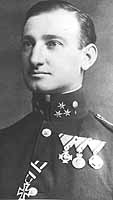
Hauptmann Otto Jindra was an Austro-Hungarian flying ace during World War I, credited with nine aerial victories while flying as an aerial observer. His abilities as both leader and administrator led to his accelerated promotion and appointments to command of aviation units despite his lack of pilot's credentials. After World War I and Austria-Hungary both ended, Jindra became a major mover in founding a Czechoslovakian air arm, which he eventually rose to command.

Kurt Gruber was an Austro-Hungarian flying ace during the First World War who held the rank of Offiziersstellvertreter. He was credited with eleven aerial victories, 5 shared with other pilots.
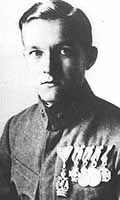
Oberleutnant Franz Rudorfer (1897-1919) was an Austro-Hungarian World War I flying ace credited with eleven confirmed and two unconfirmed aerial victories.
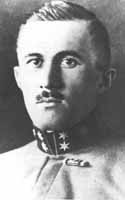
Oberleutnant Ernst Strohschneider was an Austro-Hungarian flying ace during World War I. He was credited with 15 confirmed aerial victories during his rise to the simultaneous command of two fighter squadrons. He died in a flying accident on 21 March 1918.
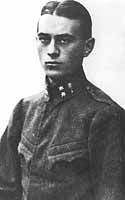
Stabsfeldwebel Ferdinand Udvardy was a Hungarian conscript into the military of the Austro-Hungarian Empire who became a flying ace credited with nine aerial victories. Upon the dissolution of Austria-Hungary, Udvardy became a Hungarian citizen, and in the aftermath of World War I, defended his new nation against invasion.

Oberleutnant Georg Kenzian Edler von Kenzianshausen followed his father's profession of arms, and served the Austro-Hungarian Empire during World War I. He became a fighter ace, scoring eight aerial victories. After the dissolution of Austria-Hungary in the aftermath of World War I, he became a citizen of German Austria and defended his new nation against invasion.




















